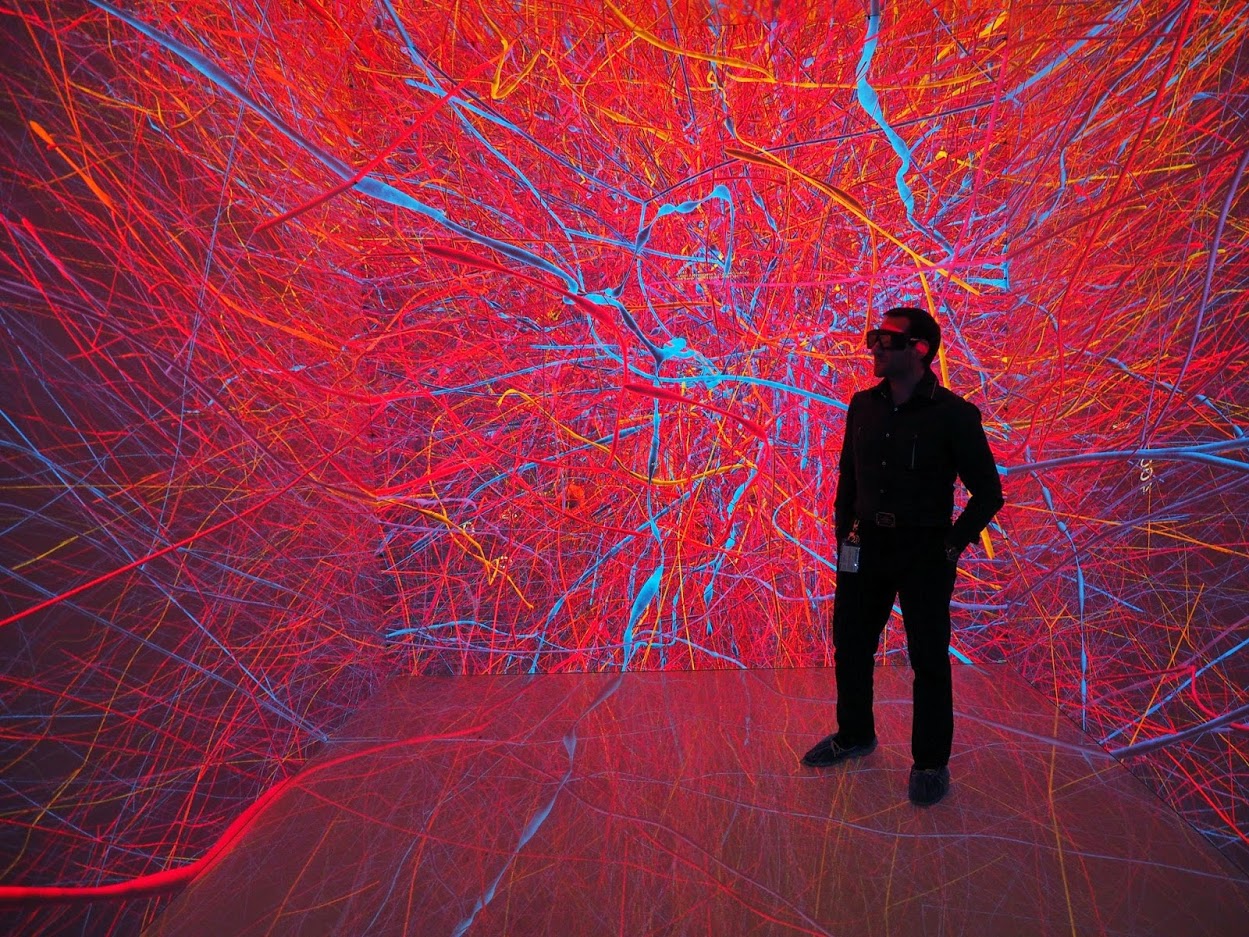Groundbreaking study improves understanding of brain function

Dr. Corrado Calì explores 3D reconstructions of extremely complex brain cells known as astrocytes, a key cell involved in memory formation and learning, within KAUST’s Visualization Core Laboratories. File photo.
Researchers at KAUST are officially one step closer to understanding the brain and its function.
Dr Corrado Calì, a research scientist in Professor Magistretti's lab, specializing in brain imaging at KAUST, and Swiss scientists from the Blue Brain Project (BBP) have shown how lactate is necessary for memory formation and learning, which could lead to improved learning and memory function. The project falls under the umbrella of the ambitious European Human Brain Project consortium framework.
Through a number of imaging experiments at KAUST's Visualization Core Labs in the past five years, Calì was able to produce three-dimensional models of astrocytes, necessary to simulate with spatial accuracy the metabolic coupling between neurons and glial cells using mathematical models developed by the BBP.
" Astrocytes are cells that store energy and give energy to neurons at multiple levels," Calì explained. " To do that, it was important to produce accurate 3D reconstructions of these astrocytes."
"What we are modelling is the mechanisms through which lactate flows from astrocytes to neurons, how much of the lactate coming from glycogen contributes to the original Astrocyte Neuron Lactate Shuttle theory, formulated over twenty years ago by Professor Magistretti, and how this mechanism contributes to the use of energy by neurons, for instance," he explained. "The mathematical point model already elucidates some of these points."
The research, published in the journal Progress in Neurobiology, uses a technique called serial block-face electron microscopy to generate an image stack—a collection of images that can produce a volumetric image of a piece of tissue that contains astrocytes. He was then able to segment them and reconstruct the cells.
Astrocytes are known to be extremely complex in structure, rendering it impossible to image them in their entirety using light or fluorescence microscopy techniques unless performed through electro-microscopy.
As of yet, astrocytes, which are types of brain cells, and the role they play in brain function is not well understood. Increasingly, work is suggesting that designing drugs that can help these cells to better function during pathological conditions, helps the brain recover during a stroke or Alzheimer's Disease.
"We could help to slow down the disease by acting specifically on these cells. The first step to understand how the cell works is to understand how it is structured, and this is the first work in literature where we see in detail in 3D the full structure of an astrocyte," says Distinguished Professor of Bioscience, Pierre Magistretti, Dean of the Biological and Environmental Science and Engineering Division at KAUST.
The groundbreaking work could allow scientists to understand if different compartments of astrocytes behave differently.
Calì believes learning how the brain uses lactate is important, as several studies from the CHUV Hospital in Lausanne, Switzerland, show, for instance, that lactate injections within 30 minutes from a stroke can significantly reduce the infarcted brain areas. It can also drastically improve the recovery of normal functions on affected patients, while other studies demonstrate the efficacy of lactate on reversing depression.
"By understanding deeply, from a cellular and molecular point of view its mechanism of action, we can design and maximize the efficiency of treatments based on lactate," Calì concluded.
Related stories:
- KAUST researcher Corrado Calì awarded at Italian neuroscience conference
- Enrichment in the Spring opens KAUST minds to wonders of human brain
- Visualization of brain structures helps to model function
-
The brain gamers

